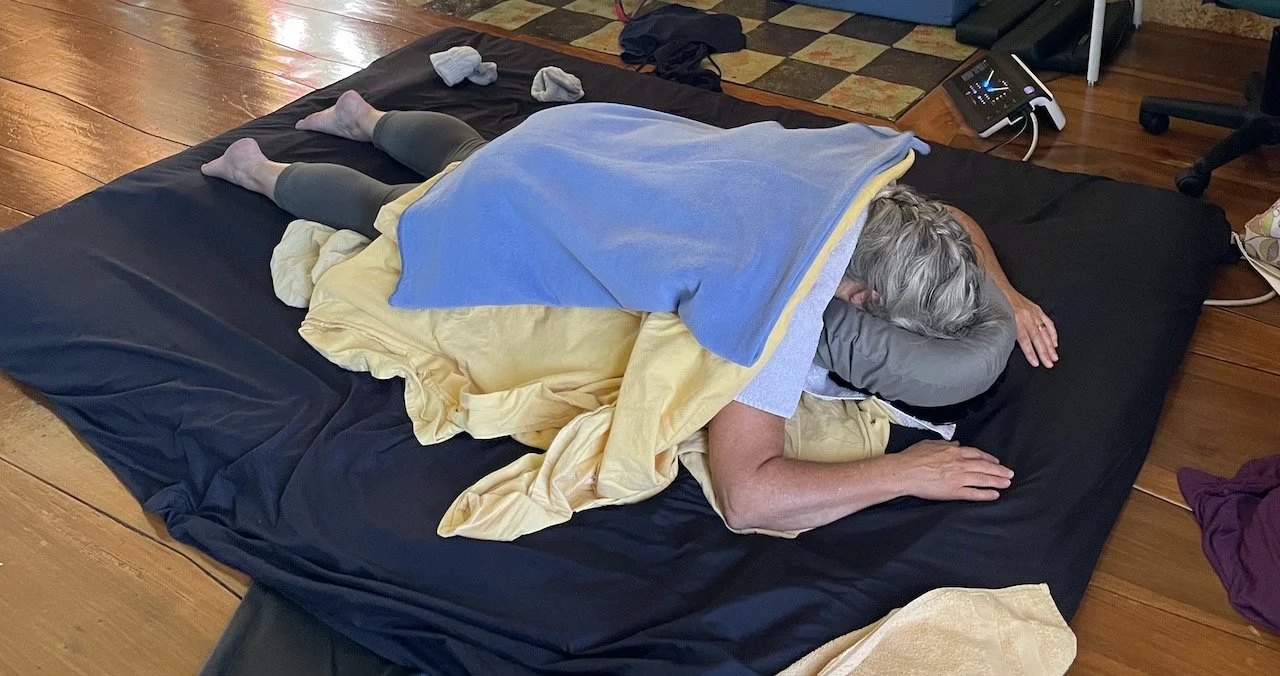In praise of ginger
Ginger (Zingiber Officinale) is perhaps known best as the spice in gingerbread, and ginger ale, or the voluptuous passenger aboard the ill-fated "Minnow".
But if you weren't aware of the miraculous properties of this strange-looking root, please allow me to introduce you!
(Zingiber Officinale)
Ginger is an herbaceous tropical perennial that grows from a rhizome which is knotty and branched and whitish or buff-colored.
Its origin is uncertain, but it is probably native to India and southern China, an introduced to the New World via southern Florida by the conquistadors.
While it is certainly becoming a common addition to American cooking, it is still one of those items that baffles grocery store clerks at the check-out counter.
Ginger is often used in Chinese and Japanese cuisine, adding a distinguishable spicy bite, as well as promoting warmth upon consumption.
If you indulge in sushi, you will usually find a small amount, sliced and pickled next to the wasabi.
Medicinally, ginger is used to soothe indigestion, nausea (even motion sickness!) and promote circulation, taken internally or applied externally.
Both the fresh root and the dried power can be used…
…but the properties of the herb changes with each form, therefore the indications for their use will vary.
For example, fresh ginger root would be used to dispel pathogens, relieve nausea and "clear away" toxic matter.
In studies with the fresh root, ginger tea reduced gastric secretions, and created a longer period of stimulation than the dried.
But the dried root is said to restore depleted "yang" (which in Traditional Chinese Medicine refers to the body's metabolic processes and ability to produce warmth), is useful for "cold" pain in the stomach (pain caused by an inability to digest food, as opposed to a "hot" inflammatory condition like an ulcer), and is thought to "strengthen" the stomach while acting as a mild stomach and intestinal stimulant. It has also been shown to inhibit vomiting.
In Chinese Medicine, ginger's qualities are described as being hot, dispersing and stimulating, and downward and outward.
So, for example, when added to other preparations, it can penetrate deep into the body and aid in breaking up or preventing the formation of stagnating mucus.
Ginger can also cause the body to sweat, which is useful when a cold or flu is coming on.
Preparations of ginger include:
Slicing the fresh root and simmering in hot water 10-15 minutes for a tea, (one friend suggested adding a spoonful of organic frozen OJ concentrate to a cupful of the ginger tea.. yummy!);
Grating it into soup, stir-fries, etc.;
Making a dip sauce with tamari (soy sauce), and mirin (sake' vinegar) to use with dishes that are fried in oil to promote easier digestion;
Making your own ginger candy;
Capsuling the dried root to keep on hand for motion sickness;
Combining with sesame oil to apply externally to the temples for headaches, or to the abdomen for menstrual cramps.
One really effective and enjoyable use is a ginger compress. (See preparation below).
Applying towels to the body that have been dipped in hot ginger infusion brings relief of chest congestion*, cramps, achy and stiff joints, low back pain, or general stimulation of sluggish kidneys.
Ginger's dispersing qualities have been known to contribute to breaking up kidney and gall stones, and other stagnated and hardened accumulations like cysts, fibroids, and benign tumors.
It is very important to note, however, the contraindications. (Always use common sense!)
Ginger compresses should NOT be used:
On the brain area (it is okay to use a MILD compress on the facial area in the case of sinusitis, or as a facial scrub;
On a baby or very old people;
On the lower abdominal area of a pregnant woman;
On an inflamed appendix or on a lung affected by pneumonia:
When a high fever or other signs of an inflammatory flare-up are present;
... and never for more than 5 minutes on a cancerous tumor!
The leftover compress water can then be reheated and used to scrub the body, or even just the hands and feet to promote circulation.
Try a footbath before bed! Quite a lovely way to start and end the day!
* While a ginger compress applied to the chest can be a powerful aid for breaking up resistant congestion, care must be taken that there is no inflammation in the lungs.
For this purpose, a tea made from lotus root may be more appropriate.*
To prepare a ginger compress:
Gather: A large handful of grated ginger, a large pot with at least two gallons of water, two hand towels, cotton string (sometimes I use a rubber band), unbleached cheesecloth or muslin, one bath towel, trivet.
(I use a crockpot specifically for this, as it lends some portability.)
Heat up the pot of water to just below boiling.
While waiting for the water to heat, grate the fresh ginger (special ginger graters can be found in Asian markets), or you can stick it in a food processor.
Place the ginger in the cheesecloth and tie with string. (THIS IS IMPORTANT, as free-floating ginger particles directly on the skin can burn…) Put the cheesecloth on a plate, as it does get drippy.
When the water is ready, squeeze the juice into the hot water, making sure not to boil it. Then throw the sack into the pot and allow it to steep for a few minutes.
Keep a lid on the pot.
Also, gather and place where you will be applying the compress:
Something to protect the surface under the hot pot;
Two hand towels;
A comfortable place to lie down (if doing the back, for example), as well as sheets and blankets to both protect the surface (as the towels will be wet), as well as layer on top of the hot towels to keep the heat in.
Bring the ginger into the room where you will be applying the compress. Again, if using a crock pot, you can have it all ready to go in the room where you’ll be treating.
Expose the skin of the area where you will be applying the compress. If this will be on the back, for example, you will need the shirt to be up. You can place a sheet or blanket on the legs, tucking it in at the waist band to keep the pants from getting wet.
Holding both ends of one of the hand towels, dip the middle into the hot ginger water. Allow it to absorb the liquid for a moment. Be careful not to get the ends of the towel wet.
Next, wring the towel, then open it and allow it to cool for a second or two. The first towel applied should not be too hot.
Apply the towel directly onto the skin and cover with the dry bath towel, and if desired, another blanket.
CAUTION! I recommend moving the towel slowly toward the skin of the receiver, so they have time to determine if it’s too hot. Be sure to check in with them! If they can relax, then proceed. Remind them that it's not an endurance test. It should be a hot as can be tolerated, but not enough to scald the skin!
It helps to fold the bath towel in two - this will keep in the heat.
While this towel in on, put the next towel in the water.
Hang opposite ends over the outside of the pot so that they stay dry and put the lid on. When the first towel begins to cool a bit, then remove it and apply the second towel, slightly warmer than the first. You'll want to work up to getting it as hot as you can tolerate, without scalding.
Continue to apply the towels until the area becomes bright red, usually about 10-15 minutes. (For a person with a lot of tension/’stagnation in the tissue, you may find that it takes longer, as well as observing some ‘blotchiness’ of red, pink and white. Eventually, as the circulation to the area increases, you’ll notice the red smoothing out.)
When the compress is finished, make sure the area is kept warm. The ginger water can be used again if it was not used on someone with a serious illness.
This can be used several times a day, for as many days as necessary, to relieve acute symptoms.
Sometimes ginger can be smelled on the breath of people who have used the compresses for a while!
This is also just a good once-in-a-while maintenance practice for the kidney region on the back, at the base of the rib cage. And, believe me, it feels lovely!
In the winter, for the purposes of compresses or making tea, it’s great to keep fresh ginger on hand . Wrapped in moist paper towels and placed in a baggie in the fridge, ginger will keep for a couple of months.
While ginger is a widely-useful herb and relatively harmless, it is always a good idea to do some research about your particular condition before using any home remedy.
Final note:
A ginger compress can be applied on oneself, but it is ideal to have it done by someone else, especially in a relaxed setting!
Local to my office? I offer this as an add-on to my bodywork sessions!




